Understanding Dryer Vents: Functionality and Safety
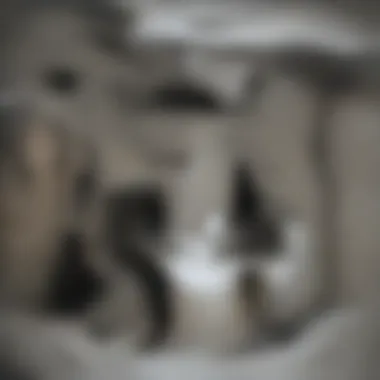
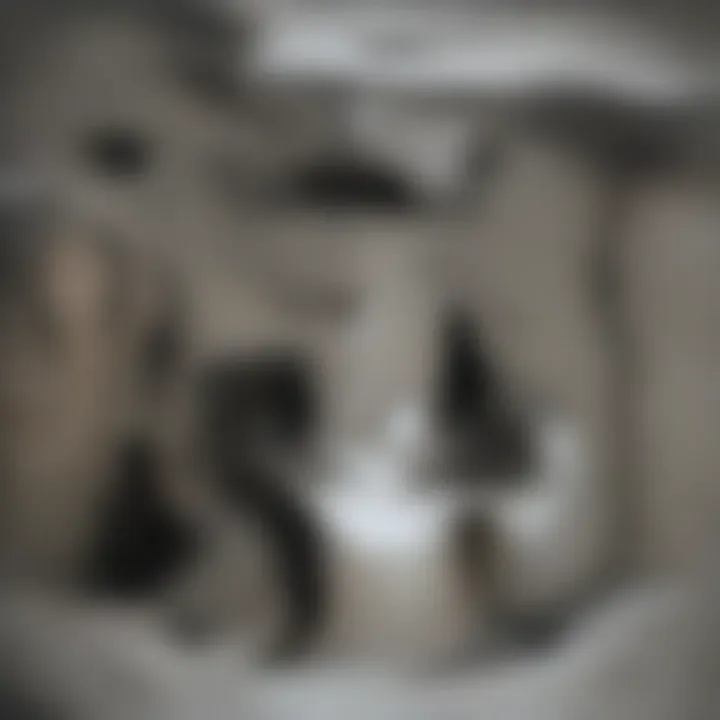
Intro
Dryer vents play a crucial role in modern households, connecting common home appliances to the external environment. Not only do they facilitate the venting of hot air and moisture produced during the drying process, but they also help maintain efficiency and safety within the home. This article aims to provide an in-depth understanding of dryer vents, focusing on their functionality, the significance of regular maintenance, and the potential safety risks they pose.
Understanding these components is essential for homeowners who seek to ensure their appliances operate effectively while minimizing hazards. With the right knowledge, homeowners can take proactive measures to maintain their dryer vents and safeguard their living environment.
Functionality of Dryer Vents
Dryer vents serve a fundamental purpose in home appliances. When clothes are placed in a dryer, they release moisture and heat. The dryer vent system transports this hot, damp air outside, preventing condensation that can lead to mold and other issues inside the home.
Key roles of dryer vents include:
- Heat Release: Removing excess heat minimizes risks of overheating within the appliance.
- Moisture Management: Preventing moisture build-up helps to maintain indoor air quality and reduces the chance of mold growth.
- Lint Extraction: Dryer vents help in expelling lint, a byproduct of the drying process. Lint build-up can present a fire hazard if not properly managed.
"Regularly cleaning and maintaining your dryer vents can significantly reduce fire hazards and improve appliance efficiency."
Importance of Regular Maintenance
The performance of dryer vents increases with consistent maintenance. Various common issues arise from neglecting this aspect, including:
- Clogs: Lint accumulation is a frequent problem. It can restrict airflow, resulting in frayed heating elements and longer drying times.
- Pest Infestations: Larger vents can attract insects and rodents, which may lead to further complications.
- Fire Hazards: A leading cause of home fires is attributed to improperly maintained dryer vents. Lint build-up can ignite easily, posing significant risks.
Homeowners should adopt routine check-ups and cleaning procedures, utilizing either professional services or DIY methods.
Maintenance Tips
To ensure dryer vents remain in optimal condition, consider the following recommendations:
- Clean the lint trap after every use.
- Inspect and clean vent hoses periodically, especially if drying takes longer than normal.
- Ensure outdoors vent flap opens freely when the dryer is running.
- Schedule professional inspections at least once a year.
Safety Implications
An awareness of the safety implications tied to dryer vents cannot be overstated. The risk of fire is a primary concern. Proper venting systems and regular inspections can significantly lower the chances of such incidents. Additionally, neglected dryer vents can lead to reduced appliance efficiency, raising energy bills and potentially causing further appliance damage.
The implications extend beyond immediate safety. Indoor air quality can suffer from poorly maintained dryer vents, contributing to allergies or respiratory issues.
End
Preamble to Dryer Vents
Understanding dryer vents is essential for any homeowner or renter. These systems play a vital role in enhancing the efficiency of clothes drying appliances. Properly functioning dryer vents are critical not only for operational efficiency but also for safety. Failing to recognize their importance can lead to serious risks, including fire hazards and indoor air quality issues.
A dryer vent serves as the exit route for hot air, lint, and moisture that is produced during the drying cycle. This process helps maintain optimal performance of the dryer, ensuring that it dries clothes effectively and efficiently. Regular maintenance and appropriate installation of dryer vents can optimize energy usage, reduce drying times, and prevent unwanted complications.
Dryer vents consist of multiple components, each with specific functions. Familiarity with these elements allows homeowners to perform necessary maintenance and troubleshooting. Recognizing what constitutes a dryer vent system helps in understanding how improper setups can cause obstructions, leading to decreased efficiency and heightened risks.
Definition and Purpose of a Dryer Vent
A dryer vent, often made from metal or duct material, is designed to carry moisture-laden air from your clothes dryer to the outside of the home. The primary purpose is to vent out hot air and humidity that builds up during the drying process. This prevents overheating of the dryer and efficiently removes lint from the air, reducing the risk of fire and ensuring that clothing dries evenly.
Dryer vents serve several functions:
- Moisture Extraction: They help to release excess moisture, preventing damp conditions in the home that could lead to mold growth.
- Lint Filtration: The vents remove lint, a highly flammable byproduct, preventing it from accumulating inside the machine.
- Energy Efficiency: Proper ventilation ensures that the dryer operates optimally, using less energy while completing drying cycles in a timely manner.
By understanding the definition and purpose, homeowners can appreciate the integral role that dryer vents play in home safety and appliance efficiency.
Components of a Dryer Vent System
A complete dryer vent system consists of several key components:

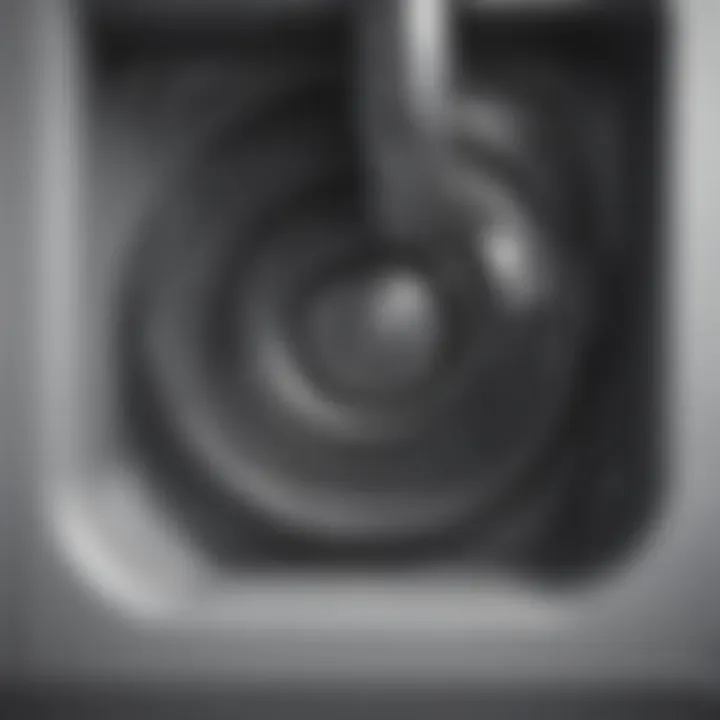
- Ducts: These are the long tubes that connect the dryer to the vent exit point. Their materials and configuration influence airflow performance.
- Vent Hood: The outside part of the vent that opens and closes depending on the dryer’s operation. It prevents rain and animals from entering the vent.
- Clamps and Connectors: These secure the ducts and prevent any disconnections that could lead to leakage of hot air and lint.
- Lint Filter: Most dryers are equipped with a lint trap, but the vent system must also prevent any residual lint from escaping into the ducts.
Understanding these components helps in recognizing how a malfunction in one aspect of the system can lead to complications. Furthermore, proper installation and maintenance of all elements are crucial for optimal dryer performance and household safety. Each part works cohesively to ensure that heating and airflow are properly controlled, allowing for efficient drying cycles.
How Dryer Vents Function
Understanding how dryer vents function is crucial for maintaining both appliance efficiency and household safety. A dryer vent is not just a passage for hot air; it plays an essential role in the overall drying mechanism and impacts the longevity of your dryer.
The Role of Airflow in Drying Clothes
Airflow is the lifeblood of efficient drying. When a dryer operates, it generates heat, which is essential for evaporating moisture from wet clothes. Air enters the dryer, is heated, and then moves through the drummed section where the clothes are. This process is vital because it removes moisture from fabric.
To ensure effective performance, the airflow must be unimpeded. When lint builds up in the dryer vent, it restricts airflow. This is not only inefficient but can lead to damp clothes remaining in the dryer. Additionally, reduced airflow forces the dryer to work harder, leading to increased wear and potential breakdowns.
"Proper airflow ensures that clothes dry thoroughly and minimizes the risks associated with malfunctioning appliances."
In summary, maintaining proper airflow within the dryer and vent system is key to ensuring optimal drying performance and reducing potential safety hazards.
Ventilation Process Explained
The ventilation process involves critical steps that allow the dryer to expel moist air efficiently. When the dryer is on, it pulls in air from the room. After the air is heated, it passes over the wet garments. As the heat elevates, moisture from the clothes evaporates and mixes with the heated air.
This mix exits through the dryer vent to the outside of the home. An effective ventilation system comprises several components:
- Dryer ducting: This is a pathway that must be free of kinks and blockages. Sufficient diameter is crucial to allow the right volume of airflow.
- Termination vent: This is the part of the system where air expels from the house. Proper installation ensures that outside air does not re-enter the system.
- Lint filter: Although this is part of the dryer, it plays a significant role in the entire venting process. Regular cleaning of the lint filter is pivotal to maintaining airflow.
Inadequate ventilation can lead to heat accumulation, which raises the risk of fire. It is evident that understanding the ventilation process is necessary not only for efficiency but also for safety concerns when operating a dryer. Regular checks of the ventilation paths are recommended to avert associated risks.
Importance of Proper Installation
The installation of dryer vents plays a pivotal role in ensuring the efficient operation of a dryer as well as the safety of a home. Proper installation minimizes risks associated with fire hazards and maintains indoor air quality. When dryer vents are improperly installed, they can lead to a series of problems, including reduced airflow and increased lint buildup. These issues can compromise the efficiency of the dryer, making it work harder, which in turn increases energy consumption.
A crucial consideration in installation is the venting path. A well-planned ventalation path reduces bending or turning; such features add resistance to airflow and create areas where lint can accumulate. Additionally, the choice of materials is also important. Metal ducts tend to be more reliable than plastic ones, as they do not warp and are less prone to lint buildup.
Furthermore, proper sealing of joints prevents air leaks that could otherwise allow moisture to affect internal structures or encourage mold growth. This can result in a host of structural problems and health risks for the occupants. In short, effective and correct installation of dryer vents is fundamental for not just the appliance's efficiency but also for the safety of the entire household.
Professional vs. DIY Installation
When installing a dryer vent, homeowners often face the choice between hiring a professional or opting for a DIY approach. Using professional services comes with the advantage of experience. Certified technicians recognize all the nuances involved in the installation and can identify potential problems before they escalate. They are familiar with local building codes and regulations and can ensure that the installation meets these criteria.
Conversely, those who choose to undertake the installation themselves may save money initially but risk making mistakes. Common DIY errors include improper duct sizing or incorrect routing, which affects airflow and can lead to ventilation failures. It is essential to weigh these options carefully and decide based on one's skill level and understanding of HVAC principles.
Common Installation Mistakes
Even minor errors in dryer vent installation can have significant repercussions. Below are some frequent mistakes to be aware of:
- Using the wrong type of duct: Plastic or flexible vinyl ducts are not recommended due to their susceptibility to damage and lint accumulation. Instead, use rigid metal ducts.
- Neglecting to include a vent cap: A vent cap prevents animals from entering the duct and blocks rain from entering, which can cause corrosion.
- Overly long duct lengths: The longer the duct, the more restricted the airflow. The maximum recommended length can be found in the manufacturer's installation guide.
- Inadequate sealing: Failing to securely fasten all the connections can lead to leaks that compromise efficiency.
Proper installation is vital not just for a dryer’s efficiency but also for reducing fire risks associated with lint buildup.
Attention to detail during installation sets the foundation for a safe and efficient dryer vent system. It affects not only the dryer’s performance but also the overall comfort and safety of any residence.
Maintenance of Dryer Vents
Maintaining dryer vents is crucial for ensuring the effective and safe operation of your drying appliances. Over time, lint, debris, and other materials can accumulate within ducts, leading to decreased efficiency, potential fire hazards, and negative impacts on indoor air quality. Regular maintenance not only prolongs the life of your dryer but also enhances its performance, allowing clothes to dry more quickly and reducing energy consumption.
Inadequate maintenance can lead to severe risks. The dryer vent system plays a key role in removing moisture from clothes while preventing overheating. A well-maintained vent helps to ensure that exhaust air flows freely, which is vital for efficient drying and minimizes the risk of fires. Therefore, it is essential that homeowners prioritize maintenance as part of their appliance care routine.
Frequency of Cleaning Recommendations
Determining how often to clean dryer vents depends on several factors, including usage frequency, type of materials being dried, and the configuration of the exhaust system. General guidelines suggest cleaning the vent at least once a year, but if you use your dryer frequently, more regular cleaning may be necessary. Some considerations include:
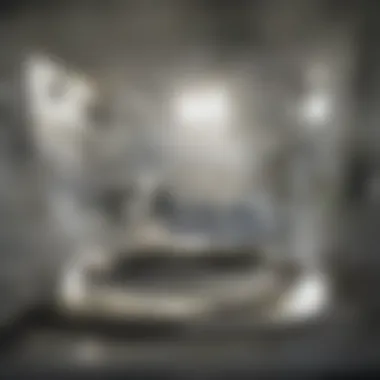
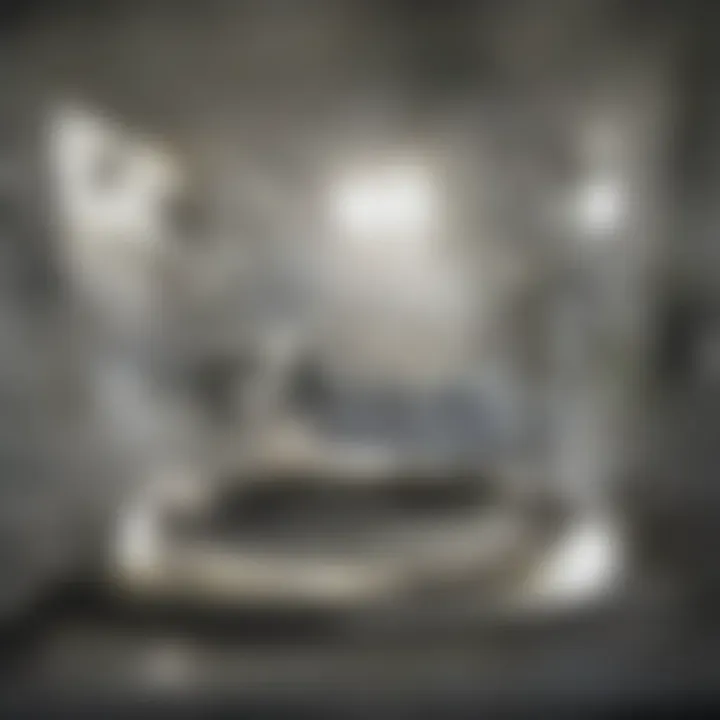
- If you notice increased drying times or clothes that are still damp at the end of a cycle, clean the vent immediately.
- For homes with multiple residents or large families, consider cleaning every six months.
- For those who dry high-fiber materials, like blankets and comforters, more frequent cleaning may be warranted.
Adhering to these recommendations can not only improve safety but also enhance the efficiency of the appliance.
Tools and Techniques for Effective Cleaning
Cleaning dryer vents effectively requires the right tools and techniques. Below is a list of essential items:
- Vent Cleaning Brush: A long-handled brush specifically designed to reach deep into duct systems.
- Vacuum with Hose Attachment: Useful for sucking out lint and debris from the vent.
- Flexible Cleaning Rods: These can help to extend your reach into longer ducts.
- Screwdriver: For removing vent covers and accessing the duct.
In terms of technique, follow these steps for effective cleaning:
- Disconnect the Dryer: Always disconnect the dryer from the power supply before starting any cleaning.
- Remove the Vent Cover: Use a screwdriver to take off the cover, allowing access to the vent.
- Clean the Duct: Insert the vent cleaning brush and use it to scrub the duct's interior sides.
- Vacuum: After brushing, use a vacuum with a hose attachment to capture leftover lint and debris.
- Reassemble: Replace the vent cover and reconnect the dryer.
Regularly maintaining your dryer vents can significantly reduce the risk of fires while improving energy efficiency. Don't overlook this essential task.
Risks Associated with Neglected Dryer Vents
The significance of addressing the risks associated with neglected dryer vents cannot be overstated. Improper maintenance and lack of attention can lead to severe consequences not only for the dryer’s efficiency but also for safety in the home. Clogged dryer vents are a serious fire hazard, while overlooking the airflow could result in compromised indoor air quality.
Fire Hazards Related to Clogged Vents
A primary concern related to dryer vent maintenance is the fire hazard posed by clogged vents. Lint accumulation within the venting system can block airflow. When lint builds up, the dryer overheats, escalating the risk of ignition. According to the National Fire Protection Association, failures to clean dryer vents are a leading cause of home fires. The high temperature from a malfunctioning dryer can ignite lint or surrounding materials, resulting in devastating fire damage.
To mitigate this risk, homeowners should take proactive steps. Regular cleaning is essential. Here are some practices to follow:
- Schedule professional vent cleaning at least once a year.
- Inspect the vent for blockages after every few loads of laundry.
- Use a vacuum or lint brush to remove lint from the venting system.
By adopting these practices, the risk of fire can be significantly reduced, creating a safer environment for your household.
Impact on Indoor Air Quality
Another critical element often overlooked is the effect of neglected dryer vents on indoor air quality. When dryer vents are blocked, inadequate ventilation can lead to a buildup of moisture and airborne particles inside the home. Excessive humidity can cause mold growth, which poses health risks, especially for individuals with respiratory concerns.
Furthermore, any pollutants or contaminants can linger in the air, affecting the comfort and well-being of residents. A clean and efficient dryer vent system is crucial for:
- Maintaining optimal airflow which helps in keeping indoor air healthy.
- Reducing moisture levels, thus minimizing the risk of mold formation.
- Promoting efficient dryer operation, which decreases energy consumption and prevents strain on the appliance.
Homeowners should prioritize maintenance of dryer vents not only for fire safety but also to ensure a healthy living environment. Engaging in regular inspections and cleaning can lead to significant improvements in air quality and overall household conditions.
"Regular dryer vent maintenance is not just about protecting your appliances; it's about ensuring your home remains safe and healthy."
Signs of a Problematic Dryer Vent
Identifying the signs of a problematic dryer vent is crucial for maintaining safety and efficiency in your home. A dryer vent that is not functioning properly can lead to various issues, including increased energy costs, fire hazards, and potential damage to your appliance. Awareness of the indicators that suggest vent problems can help facilitate timely interventions before more significant issues arise.
Clothing Not Drying Efficiently
One of the primary signs that indicate an issue with your dryer vent is when clothes are not drying efficiently. If you find that your laundry is coming out damp after a full drying cycle, it may be time to inspect your dryer vent system. Several reasons can cause this inefficiency:
- Clogged Vent: Lint buildup is a common culprit. When lint accumulates in the vent, it restricts airflow, making it difficult for the dryer to function efficiently.
- Improper Duct Design: If the venting system has excessive bends or is too long, it can hinder airflow, causing longer drying times.
- Faulty Dryer: Sometimes, the issue may arise from the dryer itself. A malfunction in the heating element or other internal components can also affect drying performance.
Being attentive to these signs will not just save time but will also prevent the risk of fires that can stem from overheating due to poor airflow. Recognizing that timely maintenance can help prolong your dryer’s life while ensuring safety should motivate homeowners to act quickly upon noticing these signs.
Unusual Smells or Heat Emission
Another warning sign of a problematic dryer vent is the presence of unusual smells or excessive heat emission. If your dryer emits a burning smell or if the exterior of the appliance is excessively hot to touch, this can indicate a serious problem. Here are some issues that can arise:
- Lint Fire Hazard: A burning odor may suggest that lint has accumulated in the vent and is ignition point for fires. Lint is highly combustible, making this an urgent matter that requires immediate attention.
- Overheating: Excessive heat around the dryer may indicate a blockage in the vent system. When airflow is not sufficient, the dryer overheats, which can also lead to equipment failure.
- Moisture Buildup: Any musty or mildew-like smells could indicate that moisture is trapped in the vent, leading to mold growth. This not only poses a health risk but can also encourage further deterioration of your vent system.
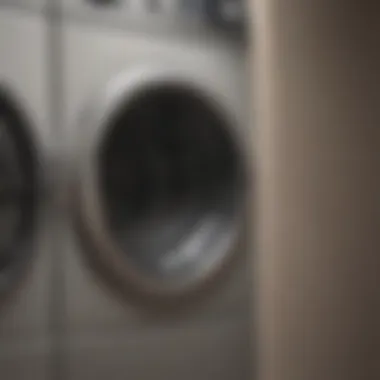
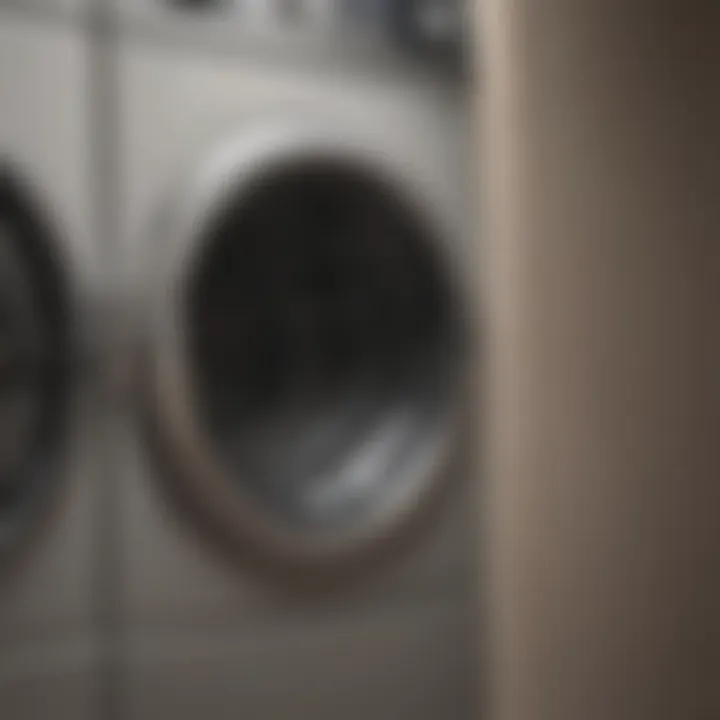
To ensure your home remains a safe environment, it is essential to regularly inspect your dryer vent system for any of these indicators.
In summary, being vigilant about potential signs of vent problems can lead to increased safety and enhanced dryer performance. If you observe any abnormalities, it is wise to consult a professional for further assessment and maintenance.
Regulatory Standards and Guidelines
Understanding the regulatory standards and guidelines around dryer vents is crucial for ensuring safety and efficiency in your home. These regulations are designed to minimize hazards associated with improper venting and to promote best practices in installation and maintenance. By adhering to these guidelines, homeowners and property managers can significantly reduce fire risks and improve the overall performance of their dryers.
Local and National Codes for Dryer Vents
Local and national codes governing dryer vent installations exist for a reason. They provide a framework to ensure that dryer vents are installed correctly and maintained regularly. The National Fire Protection Association (NFPA) and the International Residential Code (IRC) are two key sources of regulations that govern dryer vent safety in the United States.
These codes outline specifications for:
- Duct size and materials: The diameter of the vent duct should meet or exceed the requirements set forth by the manufacturer of the dryer. Common materials like aluminum and galvanized steel are recommended due to their durability.
- Vent length and configuration: There are limits on how far the duct can run and how many bends it can have. Longer ducts with multiple bends restrict airflow, which can lead to overheating.
- Termination points: Guidelines specify where vents can safely exit a building to prevent hazards associated with moisture and heat buildup.
Compliance with these codes ensures safe practices. However, local building codes can vary, so it’s essential to check regulations specific to your area. Ignoring these guidelines can also lead to serious consequences, including voiding warranties on appliances.
Best Practices Recommended by Experts
Experts recommend following certain best practices to maintain proper dryer vent functionality. Here are some key suggestions to consider:
- Regular inspections: Having the vents inspected at least once a year helps identify potential blockages or wear before they become critical issues.
- Professional cleaning: Hiring professionals to clean the dryer vent system can be more effective than attempting a DIY cleaning, as they have specialized tools and knowledge.
- Use the right venting material: Choosing smooth, rigid ducts instead of flexible plastic hoses minimizes lint accumulation and improves airflow.
- Avoid dryer sheets in the vent: Dryer sheets can leave a residue that builds up inside the vent, leading to clogs.
Implementing these best practices can significantly enhance the efficiency and safety of your dryer vent system. Following local and national codes ensures compliance with the law while also protecting your home from potential hazards.
Innovative Technologies in Dryer Vent Systems
Innovative technologies in dryer vent systems represent a critical evolution in the realm of home appliance efficiency and safety. With the increase in smart appliances and the demand for energy-efficient solutions, understanding these advancements becomes essential for homeowners. Integrating sophisticated technology into dryer vent systems not only optimizes performance but also significantly reduces risks associated with traditional venting methods. As we examine this subject, it is important to focus on two main areas: the requirements of smart dryers and the advancements in vent materials and design.
Smart Dryers and Their Venting Needs
Smart dryers are at the forefront of appliance technology, equipped with features that adjust drying cycles based on the moisture level of the fabric. However, these machines require specific venting configurations to perform optimally.
- Airflow Management: Smart dryers depend on efficient airflow to function. If the venting system is clogged or improperly designed, it can lead to poor performance and increased drying times.
- Humidity Sensors: These dryers often come with built-in humidity sensors that monitor moisture levels. A correctly installed and well-maintained vent system ensures these sensors operate effectively, aligning drying times with actual needs.
- Connection to Smart Home Systems: Many smart dryers can connect to home networks, allowing homeowners to control and monitor drying cycles remotely. The integration of this technology requires thoughtful consideration of how the vent system will interact with the dryer’s features.
- Energy Efficiency: Smart dryers are designed to consume less energy than traditional models. To fully leverage this efficiency, the venting system needs to be free from obstructions that could lead to energy waste.
Overall, understanding the specific venting needs of smart dryers can help homeowners maximize the efficiency and longevity of their dryers.
Advancements in Vent Material and Design
The materials and designs used in dryer vent systems have evolved significantly. Modern advancements focus on enhancing safety, durability, and efficiency.
- Flexible Venting Options: Improved flexible materials allow for more versatile installation options, accommodating various layouts in homes.
- Non-Flammable Materials: Many new vents are made from non-flammable materials, reducing the risk of fire hazards associated with lint buildup.
- Smooth Interior Surfaces: Advances in design now feature smooth interior surfaces. This minimizes lint buildup and allows for better airflow compared to traditional ribbed venting.
- Built-in Airflow Enhancers: Some new systems include built-in features to boost airflow, further ensuring efficient operation and reducing the strain on dryers.
- Seamless Connectors: Innovations in connector design allow for seamless transitions between ducts, further minimizing airflow restrictions.
These advancements highlight a shift towards prioritizing safety and efficiency in dryer vent systems, ensuring they meet contemporary laundry needs while protecting homes from potential hazards.
End
The conclusion of this article serves to underscore the multifaceted importance of understanding dryer vents in the context of both functionality and safety. With proper ventilation, your laundry appliances operate efficiently while simultaneously minimizing safety risks. Therefore, awareness of dryer vent systems is crucial for homeowners and renters alike.
Understanding the key elements of dryer vent installation, maintenance, and potential hazards can lead to significant benefits. Regular maintenance not only ensures optimal performance but also extends the lifespan of the dryer, thereby saving on both energy costs and replacement expenses.
Moreover, neglecting the necessary upkeep may result in severe implications like increased fire hazards and compromised indoor air quality.
"Regular inspection and cleaning of dryer vents significantly reduces fire risks and enhances appliance efficiency."
Recap of Key Points
- Definition of Dryer Vents: These are vital components of a dryer system, responsible for expelling moist air and ensuring the appliance operates efficiently.
- Functionality Overview: Their main function is to facilitate airflow, drying clothes effectively while preventing the buildup of lint.
- Installation Best Practices: Proper installation, often best handled by professionals, is key to optimal performance.
- Routine Maintenance: Cleaning dryer vents regularly is crucial to avoid fire hazards and maintain air quality.
- Signs of Issues: Identifying problems early, such as damp clothes or unusual smells, can prevent more severe complications.
- Awareness of Regulations: Understanding local codes and best practices can aid in compliance and overall safety.
- Innovations in Technology: Advances in dryer vent systems highlight the importance of smart technology in improving efficiency.
Final Thoughts on Dryer Vent Maintenance
Addressing dryer vent maintenance should not be viewed as an afterthought. Instead, it should form a mainstay in regular home upkeep practices. Regular inspections, ideally every six months, provide great benefits in both safety and appliance care. Make sure to clear any lint buildup from the vents and check for kinks in the ducting that might obstruct airflow.
Utilizing effective tools while cleaning, like a vacuum with attachments and long brushes, can enhance your maintenance efforts. While DIY efforts are acceptable, professional assistance may be necessary if you're unsure about any steps.
Finally, remember that investing time in understanding and maintaining dryer vents can prevent fire risks and ensure a more efficient utility in your home. A comprehensive approach to dryer vent care reflects not only responsibility but a commitment to creating a safe living environment.



